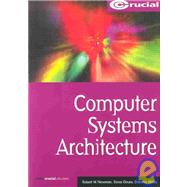| Introduction | 1 | (3) | |||
|
4 | (9) | |||
|
4 | (1) | |||
|
4 | (1) | |||
|
4 | (1) | |||
|
4 | (1) | |||
|
4 | (3) | |||
|
7 | (4) | |||
|
11 | (2) | |||
|
13 | (24) | |||
|
13 | (1) | |||
|
13 | (1) | |||
|
13 | (1) | |||
|
13 | (1) | |||
|
14 | (3) | |||
|
17 | (4) | |||
|
21 | (7) | |||
|
28 | (6) | |||
|
34 | (3) | |||
|
37 | (13) | |||
|
37 | (1) | |||
|
37 | (1) | |||
|
37 | (1) | |||
|
37 | (1) | |||
|
38 | (4) | |||
|
42 | (4) | |||
|
46 | (2) | |||
|
48 | (2) | |||
|
50 | (9) | |||
|
50 | (1) | |||
|
50 | (1) | |||
|
50 | (1) | |||
|
50 | (1) | |||
|
50 | (3) | |||
|
53 | (1) | |||
|
54 | (3) | |||
|
57 | (2) | |||
|
59 | (11) | |||
|
59 | (1) | |||
|
59 | (1) | |||
|
59 | (1) | |||
|
59 | (1) | |||
|
60 | (1) | |||
|
60 | (1) | |||
|
61 | (4) | |||
|
65 | (1) | |||
|
66 | (1) | |||
|
67 | (3) | |||
|
70 | (9) | |||
|
70 | (1) | |||
|
70 | (1) | |||
|
70 | (1) | |||
|
70 | (1) | |||
|
71 | (1) | |||
|
71 | (2) | |||
|
73 | (1) | |||
|
74 | (1) | |||
|
75 | (1) | |||
|
76 | (1) | |||
|
77 | (2) | |||
|
79 | (8) | |||
|
79 | (1) | |||
|
79 | (1) | |||
|
79 | (1) | |||
|
79 | (1) | |||
|
79 | (2) | |||
|
81 | (1) | |||
|
82 | (2) | |||
|
84 | (3) | |||
|
87 | (12) | |||
|
87 | (1) | |||
|
87 | (1) | |||
|
87 | (1) | |||
|
87 | (1) | |||
|
88 | (1) | |||
|
88 | (2) | |||
|
90 | (3) | |||
|
93 | (1) | |||
|
94 | (1) | |||
|
95 | (1) | |||
|
96 | (3) | |||
|
99 | (10) | |||
|
99 | (1) | |||
|
99 | (1) | |||
|
99 | (1) | |||
|
99 | (1) | |||
|
100 | (1) | |||
|
100 | (3) | |||
|
103 | (1) | |||
|
103 | (1) | |||
|
104 | (1) | |||
|
105 | (4) | |||
|
109 | (11) | |||
|
109 | (1) | |||
|
109 | (1) | |||
|
109 | (1) | |||
|
109 | (1) | |||
|
109 | (2) | |||
|
111 | (2) | |||
|
113 | (2) | |||
|
115 | (3) | |||
|
118 | (2) | |||
|
120 | (12) | |||
|
120 | (1) | |||
|
120 | (1) | |||
|
120 | (1) | |||
|
120 | (1) | |||
|
120 | (3) | |||
|
123 | (2) | |||
|
125 | (1) | |||
|
126 | (1) | |||
|
127 | (3) | |||
|
130 | (2) | |||
|
132 | (9) | |||
|
132 | (1) | |||
|
132 | (1) | |||
|
132 | (1) | |||
|
132 | (1) | |||
|
132 | (3) | |||
|
135 | (1) | |||
|
136 | (2) | |||
|
138 | (3) | |||
| Index | 141 |









